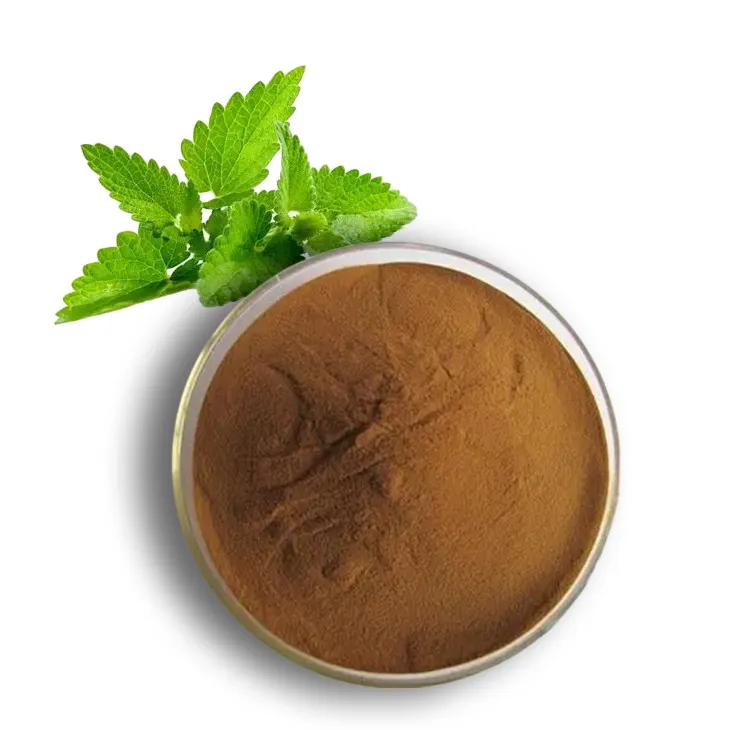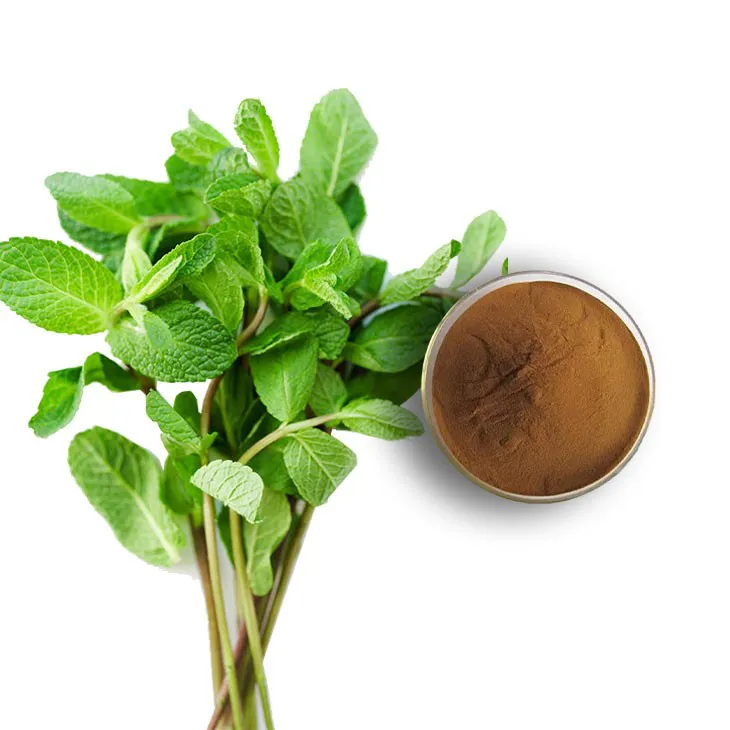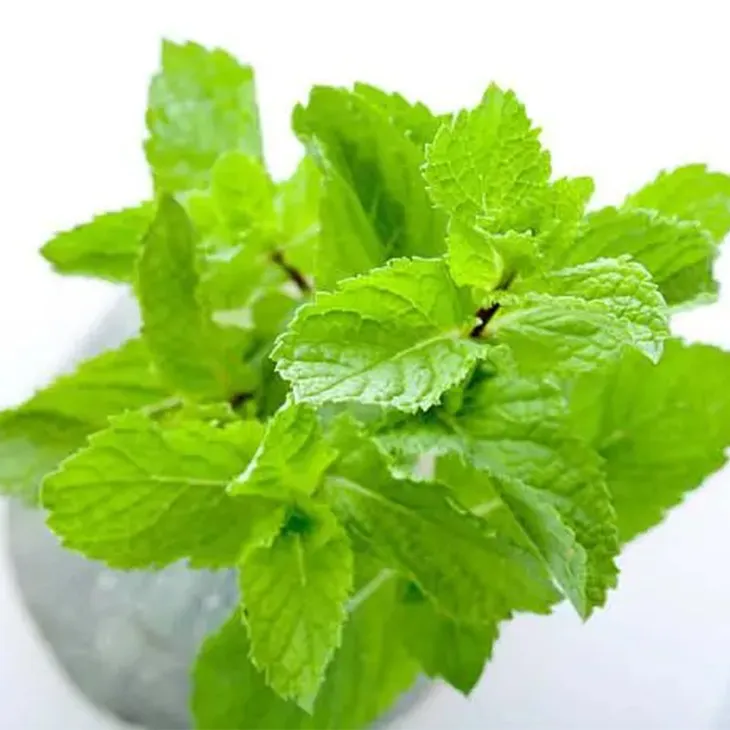- 0086-571-85302990
- sales@greenskybio.com
Extract peppermint extract powder by steam distillation.
2024-11-28

1. Introduction
Mint is a well - known and widely used herb with a refreshing aroma and various beneficial properties. The extraction of mint extract powder through steam distillation is a crucial process in obtaining the essence of mint for numerous applications. This article aims to provide a comprehensive understanding of this extraction method, including its efficiency, purity, and potential uses of the resulting extract.

2. The Principle of Steam Distillation for Mint Extract
Steam distillation is a separation technique that takes advantage of the different volatilities of the components in a mixture. In the case of mint, the essential oils, which are responsible for its characteristic smell and many of its properties, are relatively volatile. When steam is passed through the mint plant material, the heat causes the volatile components, such as the essential oils, to vaporize.
The principle behind this is based on Dalton's law of partial pressures. The total pressure of the system is the sum of the partial pressures of the steam and the volatile components from the mint. Since the boiling point of a mixture is related to the total pressure, by introducing steam, the boiling point of the mint components is lowered. This allows the essential oils to be vaporized at a temperature lower than their normal boiling point, which is beneficial as it helps to preserve their chemical integrity.

3. The Steam Distillation Process
3.1 Preparation of the Mint Material
The first step in the steam distillation process for mint extract powder is the proper preparation of the mint material. The mint leaves and stems should be harvested at the appropriate time. Fresh, healthy mint plants are typically preferred as they contain a higher concentration of essential oils.
After harvesting, the mint material is usually washed to remove any dirt or debris. It is then chopped or crushed to increase the surface area. This is important as it allows for better contact between the mint material and the steam during the distillation process.
3.2 The Distillation Setup
A typical steam distillation setup for mint extraction consists of a distillation flask, a condenser, and a collection vessel. The distillation flask is where the mint material and water (for generating steam) are placed. The condenser is used to cool down the vaporized mixture of steam and mint essential oils, causing them to condense back into a liquid state.
The collection vessel is where the condensed liquid, which contains the mint extract along with water, is collected. The distillation flask is usually heated, either directly or indirectly, to generate steam. This steam then passes through the mint material, carrying the volatile essential oils with it.
3.3 The Distillation Process
- Once the distillation setup is ready, the heating is started. As the water in the distillation flask heats up, steam is generated.
- The steam passes through the chopped or crushed mint material, vaporizing the essential oils. The vaporized mixture of steam and essential oils then rises up and enters the condenser.
- In the condenser, cold water is circulated around the tube through which the vaporized mixture passes. This causes the vapor to cool down and condense into a liquid.
- The condensed liquid, which is a mixture of water and mint extract, is collected in the collection vessel.

4. Efficiency of Steam Distillation for Mint Extract
The efficiency of steam distillation in extracting mint extract powder can be evaluated from several aspects. One important factor is the yield of the essential oils. The yield depends on various parameters such as the quality of the mint material, the distillation time, and the temperature.
Quality of mint material: As mentioned earlier, fresh and properly harvested mint with a high content of essential oils will result in a higher yield. If the mint is damaged or has been stored improperly, the yield may be reduced.
Distillation time: There is an optimal distillation time for obtaining the maximum yield of mint extract. If the distillation time is too short, not all of the essential oils may be vaporized and collected. On the other hand, if the distillation time is too long, it may lead to the degradation of some of the components in the extract.
Temperature: The temperature during distillation also affects the efficiency. If the temperature is too low, the steam generation may be insufficient, and the essential oils may not be vaporized effectively. However, if the temperature is too high, it may cause thermal degradation of the mint components.
5. Purity of the Mint Extract Obtained by Steam Distillation
Purity is a crucial aspect when it comes to mint extract powder obtained through steam distillation. The purity of the extract can be affected by several factors.
One factor is the presence of other plant components in the extract. Although steam distillation is designed to extract mainly the volatile essential oils, some non - volatile components may also be carried over to a certain extent. For example, some water - soluble compounds from the mint plant may end up in the extract.
Another factor is the potential contamination during the distillation process. If the distillation equipment is not properly cleaned or maintained, there may be residues from previous extractions that can contaminate the mint extract.
To improve the purity of the mint extract, various purification techniques can be employed. One common method is fractional distillation, which can further separate the components in the extract based on their boiling points. Another method is the use of adsorbents such as activated carbon to remove impurities.
6. Potential Uses of Mint Extract Powder
Mint extract powder obtained through steam distillation has a wide range of potential uses.
- Food and Beverage Industry: Mint extract is widely used in the food and beverage industry for its flavoring properties. It can be added to candies, chewing gums, and various beverages such as tea and cocktails to impart a refreshing minty flavor.
- Pharmaceutical and Cosmetic Industry: In the pharmaceutical industry, mint extract has certain medicinal properties. It can be used in products for relieving headaches, indigestion, and other minor ailments. In the cosmetic industry, it is used in products such as toothpaste, mouthwash, and skin creams for its refreshing and soothing properties.
- Aromatherapy: The pleasant aroma of mint extract makes it a popular choice in aromatherapy. It can be used in diffusers or added to bath products to create a relaxing and refreshing environment.
7. Conclusion
Steam distillation is a valuable method for extracting mint extract powder. It offers a way to obtain the essence of mint with reasonable efficiency and purity. Understanding the principles, processes, and factors affecting efficiency and purity is essential for optimizing the extraction. The potential uses of the mint extract powder in various industries further highlight the importance of this extraction method. As research continues, there may be further improvements in the steam distillation process and new applications for mint extract powder may be discovered.
FAQ:
1. What is the principle behind steam distillation for extracting Peppermint Extract Powder?
Steam distillation works on the principle that when steam is passed through the peppermint plant material, the volatile compounds in the mint, which are responsible for its characteristic flavor and aroma (and which are the main components of the extract powder), get vaporized. These vaporized compounds then travel along with the steam. As the vapor mixture cools down in the condenser, it condenses back into a liquid phase. The resulting liquid contains the peppermint extract, which can then be further processed to obtain the extract powder.
2. How does steam distillation affect the purity of Peppermint Extract Powder?
Steam distillation can result in a relatively high - purity Peppermint Extract Powder. Since the process is based on the volatility of the desired compounds, non - volatile substances such as sugars, proteins, and some other plant - based solids are left behind. However, there may still be some minor impurities present. For example, some water - soluble compounds that have a relatively high vapor pressure at the distillation temperature may also be carried over. But overall, compared to some other extraction methods, steam distillation can produce a fairly pure extract that can be further purified through techniques like filtration or chromatography to obtain a high - purity powder.
3. What are the main factors influencing the efficiency of steam distillation in extracting peppermint extract powder?
The main factors include the quality and freshness of the peppermint plant material. Fresher material generally contains a higher amount of volatile oils. The temperature and pressure during distillation also play a crucial role. If the temperature is too low, the volatile compounds may not vaporize completely, reducing the yield. On the other hand, if the temperature is too high, it may cause degradation of some of the desired compounds. The duration of distillation is another factor. Longer distillation times may increase the yield up to a certain point, but may also lead to the extraction of unwanted compounds or degradation of the extract. Additionally, the particle size of the plant material can affect the efficiency as smaller particles offer a larger surface area for the steam to interact with the plant material, facilitating better extraction.
4. What are the potential uses of peppermint extract powder obtained by steam distillation?
The peppermint extract powder has numerous potential uses. In the food industry, it can be used as a flavoring agent in products like candies, chewing gums, and beverages. In the pharmaceutical industry, it may have applications in oral care products due to its refreshing and antimicrobial properties. It can also be used in aromatherapy, where the characteristic minty aroma is believed to have a calming and invigorating effect. Additionally, in the cosmetic industry, it can be added to products such as lotions and creams for its pleasant smell and potential skin - soothing properties.
5. How is the peppermint extract powder further processed after steam distillation?
After steam distillation, the resulting liquid extract may be dried to obtain the powder form. This can be done through methods such as spray drying or freeze - drying. Spray drying involves spraying the liquid extract into a hot chamber where the water quickly evaporates, leaving behind the dry powder. Freeze - drying, on the other hand, involves freezing the liquid extract first and then reducing the pressure to allow the frozen water to sublime directly from the solid to the gas phase, leaving the powder. The dried powder may then be sieved to ensure a uniform particle size and further packaged for various applications.
Related literature
- Steam Distillation: Principles and Applications in Natural Product Extraction"
- "Peppermint Extract: Properties, Extraction, and Utilization"
- "Optimizing Steam Distillation for High - Quality Mint Extracts"
- ▶ Hesperidin
- ▶ Citrus Bioflavonoids
- ▶ Plant Extract
- ▶ lycopene
- ▶ Diosmin
- ▶ Grape seed extract
- ▶ Sea buckthorn Juice Powder
- ▶ Fruit Juice Powder
- ▶ Hops Extract
- ▶ Artichoke Extract
- ▶ Mushroom extract
- ▶ Astaxanthin
- ▶ Green Tea Extract
- ▶ Curcumin
- ▶ Horse Chestnut Extract
- ▶ Other Product
- ▶ Boswellia Serrata Extract
- ▶ Resveratrol
- ▶ Marigold Extract
- ▶ Grape Leaf Extract
- ▶ New Product
- ▶ Aminolevulinic acid
- ▶ Cranberry Extract
- ▶ Red Yeast Rice
- ▶ Red Wine Extract
-
Lavender Extract
2024-11-28
-
Sea buckthorn Juice Powder
2024-11-28
-
Feverfew Extract
2024-11-28
-
Panax Ginseng Leaf Extract
2024-11-28
-
Curcumin
2024-11-28
-
Black Pepper Extract
2024-11-28
-
Genistein
2024-11-28
-
Tamarind extract powder
2024-11-28
-
Marigold Extract
2024-11-28
-
Quercetin
2024-11-28





















